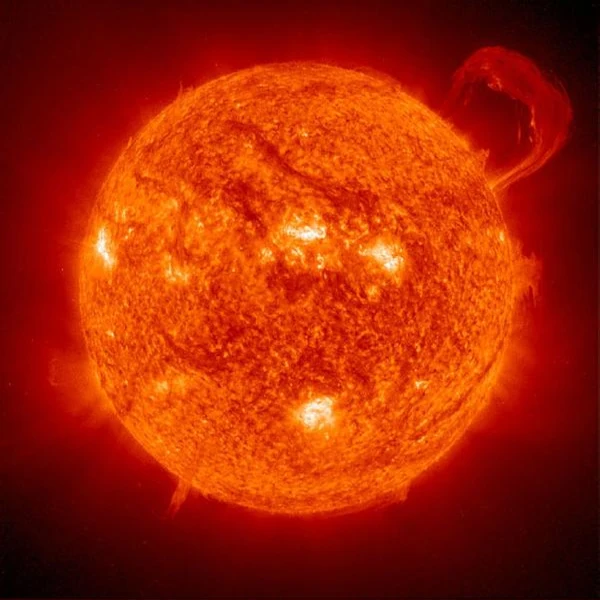
Solar prominences are spectacular magnetic structures that appear in the solar corona, composed mainly of dense and relatively cool plasma (about 10,000 K) compared to the coronal environment (1 to 3 million K). These filaments of solar material can persist for several weeks before disintegrating or being ejected into space as solar flares.
Prominences form in the active regions of the Sun where magnetic fields are particularly intense. Their stability is ensured by the balance between several forces:
The magnetic configuration can be described by the Lorentz force equation: \[ \mathbf{F} = q(\mathbf{E} + \mathbf{v} \times \mathbf{B}) \] where \( q \) is the charge of the plasma, \( \mathbf{v} \) its velocity, \( \mathbf{E} \) the electric field, and \( \mathbf{B} \) the magnetic field.
There are mainly two types of prominences:
| Type | Lifespan | Typical height (km) | Temperature (K) |
|---|---|---|---|
| Quiescent | 1-6 months | 50,000 - 100,000 | 5,000 - 10,000 |
| Eruptive | Minutes to days | Up to 500,000 | 10,000 - 50,000 |
Solar prominences play a key role in one of the great enigmas of solar physics: the mechanism of coronal heating that reaches temperatures of 1 to 3 million kelvins, while the visible surface (photosphere) does not exceed 5800 K. This inverse thermal gradient defies the classical laws of thermodynamics.
Several mechanisms have been proposed to explain this phenomenon:
Prominences act as tracers of coronal processes:
| Mechanism | Spatial scale | Energy per event | Frequency |
|---|---|---|---|
| MHD waves | Global (≈ 50 Mm) | 1017 - 1019 W | Continuous |
| Reconnection | 1 - 10 Mm | 1020 - 1023 J | Daily |
| Nanoflares | ≈ 100 km | 1024 J | 106/day |
Source: Living Reviews in Solar Physics (2013)
Prominences are mainly observed:
Their study allows a better understanding of:
Solar prominences, although studied for over a century, continue to fascinate solar physicists with their magnetic complexity and their role in space weather. Their complete understanding still requires theoretical and observational advances, particularly thanks to new space missions dedicated to the study of the Sun.